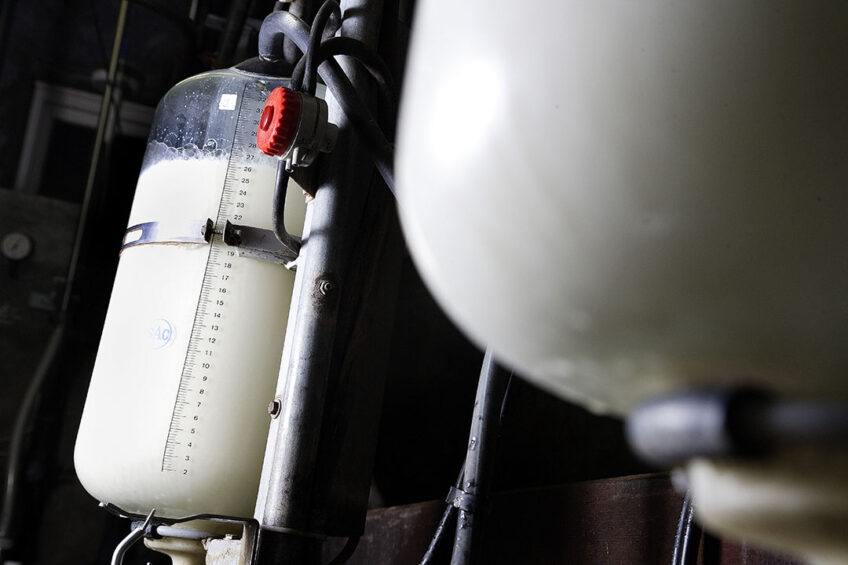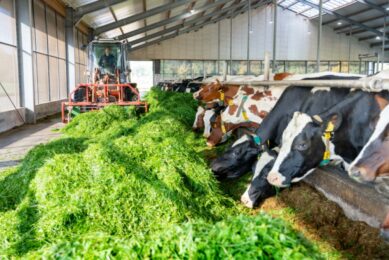IFCN report: Higher costs, higher prices and more milk

The global average cost to produce 100kg of milk is US$?40.20. This is almost $?2 more than last year, mainly due to the devaluation of the dollar. The world milk price for 2019 is estimated to stabilise.
This is according to the latest IFCN Dairy Report 2018. This report focuses on the dairy value chain, covering 115 country profiles representing 98% of total global milk production. Analysis has been done on 177 typical farm types in 53 countries. For the first time, fundamental indicators to asses sustainability on economic, social and environmental issues are monitored.
Average costs to produce milk
The number of farms analyses account for 89% of the milk production worldwide. The average cost of milk production of all the 132 farms analysed was US$ 40.2 per 100kg milk. This is nearly $ 2 above the previous year. The higher cost price is mainly driven by the devaluation of US dollar against some currencies, higher feed costs and inflation rates (depending on the country affected). Globally, the cost of milk production varied widely in the range of $ 20 to $ 105 /100kg standardised milk in 2017. However, most farms have a cost price between $ 30 and $ 60 per 100 kg milk.
Also read: IFCN: More milk needed by 2030
Farm gate and world milk prices
The average farm gate milk price of all farms analysed was US$ 41.2 per 100kg Solid Corrected Milk (SCM), an increase of nearly US$ 3.5 over 2016. This had a clear effect on farm profitability as entrepreneurs profit increased by US$ 2.8 /100kg SCM. The highest gains in profitability relative to the 2015-2016 crisis period were monitored in Western Europe, CEEC and New Zealand. In 2017, at a global level, all milk production increased by 2.6%. According to IFCN, the average world milk price started to recover in mid-2016. In 2017 supply growth and demand growth balanced out, leading to a price stabilisation and an average annual milk price of US$ 35.5 per 100kg Energy Corrected Milk (ECM).

Carbon footprint analysis
For the first time, IFCN has published farm sustainability indicators capturing environmental, animal health and welfare and social sustainability issues. GHG emissions measured as CO2 equivalent per 100kg standardised milk using comparable data and standard partial LCA method enable to compare and benchmark globally 177 farm types in 53 countries. Carbon footprint ranged from around 90 CO2 to >1,000kg CO2 per 100kg milk. Many farms with a higher yield (such as farms in Germany and USA) showed a carbon footprint between 100 and 150 CO2 per 100kg milk, while low yielding systems in developing countries can be up to 5 times higher.
Cow age between 4 and 10 years
The IFCN also now takes the average age of cow and lifetime production into the analysis. The average life period of a cow in typical farm types ranging from 4 years to 10 years. The lifetime period in developed countries is lower than 5 years, although intentions to utilise a longer productive period of cows exists. Farms in the US produce over 30 tonnes of milk per cow over a lifetime of 6 years, while a 2-cow farm in Bangladesh is producing 5 tonnes milk with a 9 year lifetime. Also somatic cell count (SCC) was analysed. Farms monitored in 2017 show a SCC range from 67,000 to over 1,000000 cells per ml. This means that there is still potential to improve here.
Milk production worldwide
Milk production in 2009, 2013 and 2016 was weak, mainly due to poor farm economics, lower farm gate milk prices, higher production costs based on oil, feed and input factors or adverse weather events. 2005, 2006, 2011 and 2014 were strong years with high growth rates, driven by beneficial weather events, high milk prices and policies like the EU quota abolition. In 2017, milk production growth recovered (+2.6% compared to 2016). The higher milk prices in 2017 for European farmers triggered an increase in production, especially in Eastern Europe, UK and Ireland. New Zealand and the US continued their growth. Also some new players entered the market. Turkey increased its milk production by 10%, Colombia by 15% and Canada by 4%. For 2018, IFCN reports that the world milk production growth reached an average of 2.2% year on year growth (January-September 2018). This is slightly below the long-term average growth of 2.3%. More particularly, production growth slowed down from 3.1% in January 2018 to only 1.7% growth in September. This slowdown can be explained by adverse weather events and lower margins which effected the milk production in the Northern Hemisphere in mid-2018. Also macroeconomic and political shocks which hit South American countries have been influencing the growth.
What to expect in 2019?
IFCN forecasts that the world milk price will stabilise at a higher level than US$ 35 per 100kg ECM. Demand growth is supposed to slightly exceed supply growth. This is driven by the long-term effect of the EU-drought of 2018, provoking less available feed with a lower quality in 2019. This in turn has resulted in a lower number of cows and a lower yield. The EU milk price is supposed to be slightly higher than the world milk price.
This analysis is done by Katrin Reincke, Amit Saha, Łukasz Wyrzykowski.
Join 13,000+ subscribers
Subscribe to our newsletter to stay updated about all the need-to-know content in the dairy sector, two times a week.










